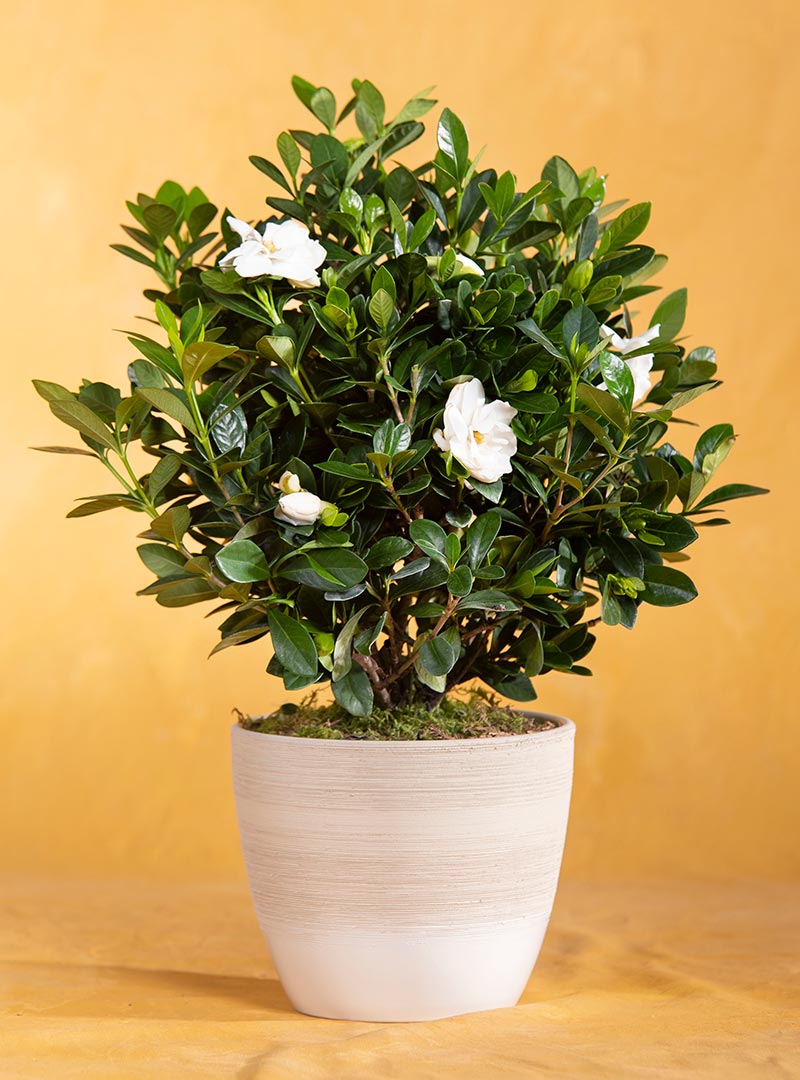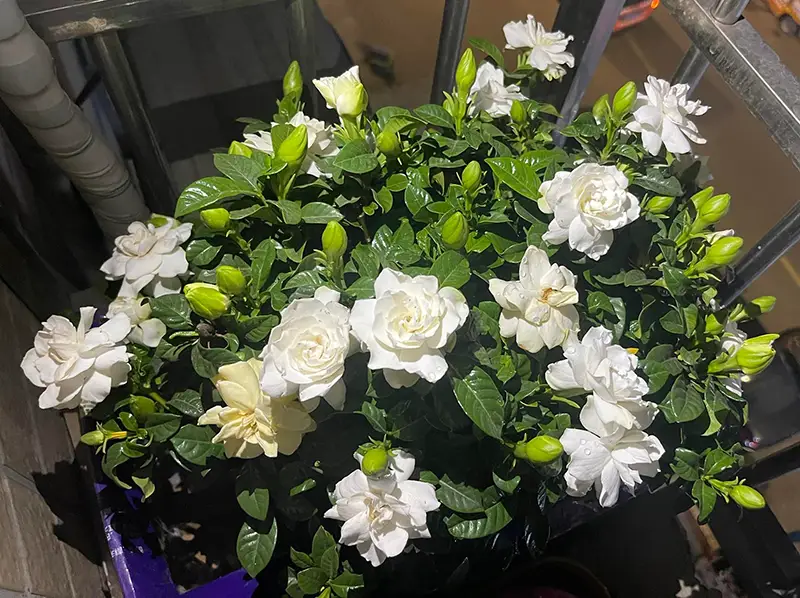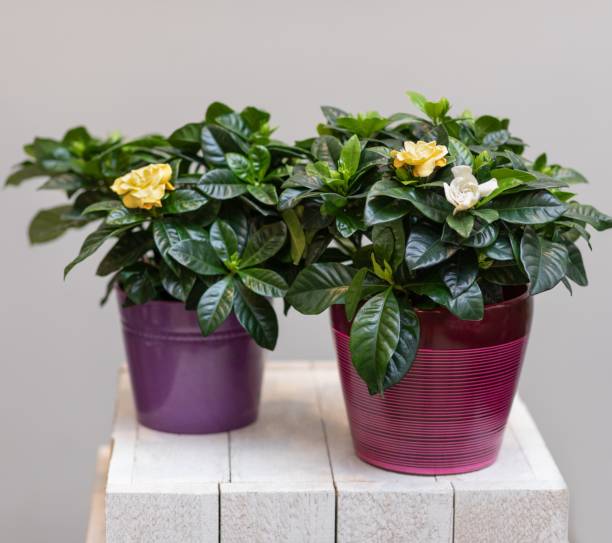Choosing the Right Pot for Your Gardenia
When it comes to growing gardenias in containers, selecting the right pot is crucial for the plant’s health and growth. A well-chosen pot can provide the necessary support and environment for the gardenia to thrive. So, can you plant gardenias in a pot? The answer is yes, but it’s essential to choose a pot that meets the plant’s specific needs.
Size is a critical factor to consider when choosing a pot for your gardenia. A pot that is too small can cause the soil to dry out too quickly, while a pot that is too large can lead to waterlogged soil. A general rule of thumb is to choose a pot that is at least 6-8 inches deep and has a diameter of 8-10 inches. This size pot will provide enough room for the gardenia’s roots to grow without becoming too wet or dry.
Material is another important consideration when selecting a pot for your gardenia. Terra cotta pots are a popular choice because they are breathable and allow for good air circulation. However, they can be prone to drying out quickly, so it’s essential to monitor the soil moisture regularly. Plastic and ceramic pots are also good options, but they may require more frequent watering.
Drainage is also a critical factor to consider when choosing a pot for your gardenia. A pot with good drainage will prevent waterlogged soil and root rot. Look for pots with drainage holes in the bottom or consider adding a layer of broken pottery or small rocks to improve drainage.
By choosing a pot that meets the specific needs of your gardenia, you can provide the necessary support and environment for the plant to thrive. Whether you’re a seasoned gardener or just starting out, selecting the right pot is an essential step in growing healthy and beautiful gardenias in containers.
How to Plant a Gardenia in a Pot for Optimal Growth
Planting a gardenia in a pot can be a rewarding experience, but it requires careful attention to detail to ensure optimal growth. Can you plant gardenias in a pot? Yes, with the right techniques and materials, you can enjoy the beauty and fragrance of these lovely plants in a container.
Soil selection is a critical step in planting a gardenia in a pot. Gardenias prefer well-draining, acidic soil with a pH between 5.0 and 6.0. A potting mix specifically designed for acid-loving plants is ideal. Avoid using regular potting soil, as it can be too alkaline for gardenias.
When planting a gardenia in a pot, it’s essential to choose a pot that is large enough to accommodate the plant’s root system. A pot that is at least 6-8 inches deep and has a diameter of 8-10 inches is recommended. This size pot will provide enough room for the gardenia’s roots to grow without becoming too wet or dry.
To plant a gardenia in a pot, start by removing the plant from its container and gently loosening the roots. Place a layer of potting mix in the bottom of the pot, and then position the gardenia in the center. Fill in the sides with potting mix, gently firming it around the roots as you go. Water thoroughly to settle the soil.
Planting depth is also crucial when planting a gardenia in a pot. Plant the gardenia at the same depth it was previously growing, making sure the crown (where the stem meets the roots) is level with the soil surface. This will help prevent the plant from becoming too wet or dry.
Watering is also essential when planting a gardenia in a pot. Water thoroughly after planting, and then reduce watering to once a week during the first few weeks after planting. As the plant becomes established, you can gradually increase watering to once every 4-5 days.
By following these steps and tips, you can successfully plant a gardenia in a pot and enjoy its beauty and fragrance for years to come.
Gardenia Container Care: Tips for Success
Once you’ve planted your gardenia in a pot, it’s essential to provide the right care to promote healthy growth and blooming. With proper care, gardenias can thrive in containers and provide beautiful flowers and fragrance for months to come.
Fertilization is a crucial aspect of gardenia container care. Feed your gardenia with a balanced, water-soluble fertilizer (20-20-20) during the growing season (spring-fall). Dilute the fertilizer to half the recommended strength to avoid burning the roots. You can also use a fertilizer specifically formulated for acid-loving plants, as gardenias prefer slightly acidic soil.
Pruning is another essential part of gardenia container care. Prune your gardenia regularly to maintain its shape, promote healthy growth, and encourage blooming. Remove any dead or damaged leaves or stems, and cut back leggy branches to encourage bushy growth. Prune your gardenia immediately after it finishes blooming, as this will help promote new growth and encourage more blooms.
Pest management is also critical when growing gardenias in containers. Check your plant regularly for signs of pests, such as mealybugs, spider mites, and aphids. Use organic or integrated pest management methods to control infestations, such as neem oil, insecticidal soap, or horticultural oil.
Watering is also an essential part of gardenia container care. Water your gardenia when the top 1-2 inches of soil feels dry to the touch. Avoid overwatering, as this can lead to root rot and other problems. Water at the base of the plant, avoiding the leaves to prevent fungal diseases.
By following these tips and providing regular care, you can enjoy beautiful, thriving gardenias in containers. Whether you’re a seasoned gardener or just starting out, with the right care and attention, your gardenias will reward you with stunning flowers and fragrance for months to come.
Common Mistakes to Avoid When Growing Gardenias in Pots
While growing gardenias in pots can be a rewarding experience, there are several common mistakes to avoid in order to ensure the health and success of your plant. By being aware of these potential pitfalls, you can take steps to prevent them and enjoy a thriving gardenia in a pot.
One of the most common mistakes people make when growing gardenias in pots is overwatering. Gardenias prefer well-draining soil and can be susceptible to root rot if the soil is too wet. Check the soil moisture regularly, and avoid watering if the top 1-2 inches of soil feels wet. Instead, wait until the soil feels dry to the touch before watering again.
Underwatering is another common mistake to avoid when growing gardenias in pots. Gardenias need consistent moisture, especially when they’re producing flowers. Check the soil moisture regularly, and water your gardenia when the top 1-2 inches of soil feels dry to the touch.
Inadequate sunlight is another mistake to avoid when growing gardenias in pots. Gardenias prefer bright, indirect sunlight, and can become leggy or weak if they don’t receive enough light. Place your gardenia in a spot that receives bright, indirect sunlight for at least 4-6 hours per day.
Using the wrong potting mix is another mistake to avoid when growing gardenias in pots. Gardenias prefer a well-draining, acidic potting mix that is specifically designed for acid-loving plants. Avoid using regular potting soil, as it can be too alkaline for gardenias.
Not fertilizing regularly is another mistake to avoid when growing gardenias in pots. Gardenias need regular fertilization to promote healthy growth and blooming. Use a balanced, water-soluble fertilizer (20-20-20) during the growing season (spring-fall), and dilute it to half the recommended strength to avoid burning the roots.
By avoiding these common mistakes, you can help ensure the health and success of your gardenia in a pot. Remember to choose the right pot, plant correctly, and provide regular care and maintenance to enjoy a thriving gardenia in a pot.
Gardenia Varieties Suitable for Container Gardening
When it comes to growing gardenias in containers, choosing the right variety is crucial for success. Some gardenia varieties are better suited for container gardening than others, and selecting the right one can make all the difference in the health and beauty of your plant.
‘Radicans’ is a popular gardenia variety for container gardening, known for its compact growth habit and small, fragrant flowers. This variety is ideal for small pots and can thrive in partial shade, making it a great choice for indoor containers.
‘Dwarf’ is another popular gardenia variety for container gardening, known for its small size and compact growth habit. This variety produces small, fragrant flowers and can thrive in small pots, making it a great choice for small spaces.
‘Klein’s Hardy’ is a gardenia variety that is specifically bred for container gardening, known for its compact growth habit and cold hardiness. This variety can thrive in zones 6-9 and produces small, fragrant flowers, making it a great choice for outdoor containers.
Other gardenia varieties that are suitable for container gardening include ‘August Beauty’, ‘Fall in Love’, and ‘Miami Supreme’. These varieties offer a range of growth habits, flower sizes, and fragrances, making it easy to find the perfect variety for your container garden.
When selecting a gardenia variety for container gardening, consider factors such as growth habit, flower size, and fragrance. Compact varieties like ‘Radicans’ and ‘Dwarf’ are ideal for small pots, while larger varieties like ‘Klein’s Hardy’ can thrive in larger containers.
By choosing the right gardenia variety for your container garden, you can enjoy beautiful, fragrant flowers and a thriving plant that will bring joy and beauty to your outdoor or indoor space.
Repotting Gardenias: When and How to Do It
Repotting gardenias is an essential part of their care, as it provides the plant with fresh soil and a larger pot to accommodate its growing roots. But when and how should you repot your gardenia? In this section, we’ll explore the signs that indicate the need for a larger pot and provide a step-by-step guide on how to repot a gardenia.
So, can you plant gardenias in a pot and then repot them later? Yes, you can In fact, repotting gardenias is a common practice that helps promote healthy growth and prevent root bound conditions. But before you repot your gardenia, make sure you wait for the right time.
The best time to repot a gardenia is during the spring or summer months when the plant is actively growing. Avoid repotting during the fall or winter months when the plant is dormant, as this can cause stress and lead to disease or pest problems.
Signs that indicate the need for a larger pot include roots growing out of the drainage holes, water pooling around the base of the plant, and the plant becoming top-heavy. If you notice any of these signs, it’s time to repot your gardenia.
To repot a gardenia, start by selecting a pot that is only one to two sizes larger than the current pot. This will prevent the soil from becoming too wet and reduce the risk of root rot. Next, choose a well-draining potting mix that is specifically designed for acid-loving plants like gardenias.
Remove the gardenia from its pot and gently loosen the roots with your fingers or a blunt instrument. Trim any dead or damaged roots to prevent the spread of disease. Then, place the gardenia in its new pot and add fresh potting mix around the roots.
Water the gardenia thoroughly after repotting and provide bright, indirect light. Keep the soil consistently moist but not waterlogged, and fertilize regularly to promote healthy growth.
By following these steps and repotting your gardenia at the right time, you can provide your plant with the best possible care and promote healthy growth and blooming.
Pest and Disease Management for Gardenias in Pots
Pests and diseases can be a significant problem for gardenias in pots, especially if they are not properly cared for. In this section, we’ll discuss some common pests and diseases that can affect gardenias in containers and provide advice on how to prevent and treat them.
Mealybugs are a common pest that can affect gardenias in pots. These small, white insects feed on the sap of the plant, causing damage to the leaves and stems. To prevent mealybugs, make sure to inspect your plant regularly and remove any infested leaves or stems. You can also use insecticidal soap or neem oil to control mealybug populations.
Spider mites are another common pest that can affect gardenias in pots. These tiny, spider-like insects feed on the sap of the plant, causing damage to the leaves and stems. To prevent spider mites, make sure to provide your plant with good air circulation and keep the soil consistently moist. You can also use insecticidal soap or neem oil to control spider mite populations.
Root rot is a common disease that can affect gardenias in pots. This disease is caused by overwatering, which can lead to the roots of the plant rotting. To prevent root rot, make sure to provide your plant with good drainage and avoid overwatering. You can also use a fungicide to treat root rot.
Leaf spot is another common disease that can affect gardenias in pots. This disease is caused by a fungal infection, which can lead to the leaves of the plant becoming spotted or discolored. To prevent leaf spot, make sure to provide your plant with good air circulation and keep the soil consistently moist. You can also use a fungicide to treat leaf spot.
By following these tips and taking steps to prevent pests and diseases, you can help keep your gardenia healthy and thriving in its pot. Remember to always inspect your plant regularly and take action quickly if you notice any signs of pests or diseases.
Overwintering Gardenias in Pots: Tips for Success
Overwintering gardenias in pots can be a challenging task, but with the right techniques and care, you can help your plant survive the cold winter months. In this section, we’ll provide guidance on how to overwinter gardenias in pots, including tips on reducing watering, fertilizing, and pruning.
So, can you plant gardenias in a pot and then overwinter them? Yes, you can In fact, many gardeners successfully overwinter their gardenias in pots every year. However, it’s essential to take the right steps to protect your plant from extreme temperatures and frost.
One of the most important things to do when overwintering gardenias in pots is to reduce watering. Gardenias require less water during the winter months, so make sure to cut back on watering to once a month. You can also use a moisture meter to check the soil moisture and adjust your watering schedule accordingly.
Fertilizing is also crucial when overwintering gardenias in pots. Use a balanced, water-soluble fertilizer (20-20-20) at half the recommended strength to promote healthy growth and blooming. You can also use a fertilizer specifically formulated for acid-loving plants like gardenias.
Pruning is another essential step when overwintering gardenias in pots. Prune your gardenia in the fall to prepare it for the winter months. Remove any dead or damaged leaves or stems, and cut back leggy branches to encourage bushy growth.
Protecting your gardenia from extreme temperatures and frost is also crucial when overwintering in pots. Move your plant to a protected location, such as a garage or a sunroom, to shield it from harsh winds and frost. You can also use a frost blanket or a sheet to cover your plant and protect it from frost.
By following these tips and taking the right steps to care for your gardenia, you can help it survive the winter months and thrive in the spring. Remember to monitor your plant’s health and adjust your care routine accordingly to ensure its success.




:max_bytes(150000):strip_icc()/gardenia-resized-58a47c093df78c475875b066.jpg)

